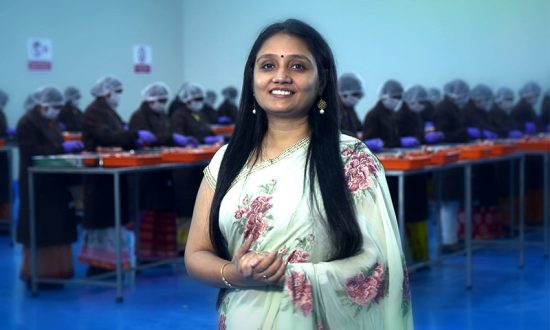Purnima co-founded INI Farms in 2009 and is the first woman CEO of one of the largest fresh fruit company from India. Purnima has built InI Farms into a global enterprise operating in 35 countries and 8 Indian states. With direct farm to fork model, INI Farms works with over 5000 farmers and links them directly to world’s largest retailers. Purnima is the driving force behind creating India’s first “safe food’ brand Kimaye leading the entire gamut of brand building initiatives from consumer insights to packaging innovations to distribution. Her strength in building long lasting relationships has helped InI achieve leadership in exports as well as domestic market. Purnima’s experience spans over 20 years including 17 years as an entrepreneur.
Since the COVID-19 pandemic began, the world as we know it has fundamentally changed. In various ways, people are thinking, buying, and living differently. Across the globe, consumers are viewing products and brands in a whole new light. And this includes the food they consume. As safety and health takes precedence, consumers are becoming very careful about what they eat. Fresh produce has largely supplanted processed foods as the preferred choice; they are willing to pay more for better quality and increasingly demanding transparency on production and supply chain. This has accelerated the trend for branded fresh produce with companies and growers working on building brands beyond the Logo and adding value through packaging, communication, traceability and block-chain.
When we talk about branding, fresh produce like fruit is not one of the first things that come to mind. In contrast to processed foods, fresh produce has traditionally been sold as generic products without any specific branding. The emergence of branded products in this category is a relatively new development in the markets. However, retailers and suppliers are increasingly emphasizing to consumers the importance of branded products – especially with the growth in online sales of fresh fruits, where consumers can’t see, touch, or smell the products they’re purchasing, and rely on other criteria to determine quality and reliability that trusted brands can deliver. COVID-19 has further accelerated the demand for safety of the fruit and people are now willing to spend more as long as the quality is assured. The key to garnering great brand recognition in the fresh fruits market is to create a brand story consumers can relate to.
Today, consumers have greater purchase choices than ever before. The days of buying apples or bananas only from a bin are long gone. A typical supermarket in any developed country offers consumers a variety of fruit options based on variety, price, farming practices, geographical location, and even packaging. We have come a long way since just the size and cosmetics of the fruit were determinant of superior quality. Today, producers are taking natural commodities and using careful selection processes, packaging, and branding strategies to transform fruits into what consumer desire: a personal eating experience. So, the consumer is no longer just buying a banana. They want a specific banana, with a specific flavor & texture in environment-friendly packaging, ethically sourced and meets global food safety standards. It’s no longer just buying the fruit. It’s the whole experience.
This shift in consumer behaviour and expectations has created excellent opportunities for organizations and growers to brand fresh produce beyond “Fresh and Tasty”. Today, fruits and vegetables are getting branded on the promise of “sourcing location”, “traceability”, “Food safety standards”, “Global certifications”, “environment-friendly” and/or combinations of one or more of these attributes. The ability to satisfy the needs of consumer beyond just providing a fruit for consumption can create sustainable and long term value.
While the marketing and branding of the product is key, quality is still paramount. If a consumer becomes emotionally involved in a brand, any bad experience is magnified. Quality begins on the farm, continues in the packing house, and is celebrated at the end of the process. Stringent quality control in the entire value chain alone can ensure the consumer gets an enjoyable eating experience every time. The recent developments on technology driven grading-sorting systems, automation, hand-held quality control devices etc. make it possible to guarantee fruit’s taste and eating experience to meet brand promise and consumer expectations.
People generally make their first purchase based on what they see, and their second purchase based on what they experience with the first purchase. Packaging plays a major role in driving purchase decisions. In case of perishables, packaging play a significant role in maintaining quality of product during transit and storage. On retail shelf, it’s the best way to communicate with the consumer. Not only right packaging attracts the consumer, ideal packaging design reflects the brand promise. Integration of technology in packaging, such as QR codes, helps in improving customer engagement with the brand while providing traceability and transparency of the supply chain.
Branding is a powerful tool for positioning high-quality produce as distinctive and valuable. Being conscious of the effort it took to build an effective brand is important as branding can often be a company’s most valuable asset. It has long been a challenge for fresh produce suppliers to guarantee the quality of the experience, something that they could not do previously. And therefore today, thanks to the choices and experience that a consumer desires along with the technological developments to fulfill these demands, a humble banana is no longer just the world’s undisputed favourite fruit, but also has the potential to be a billion dollar brand worldwide.


